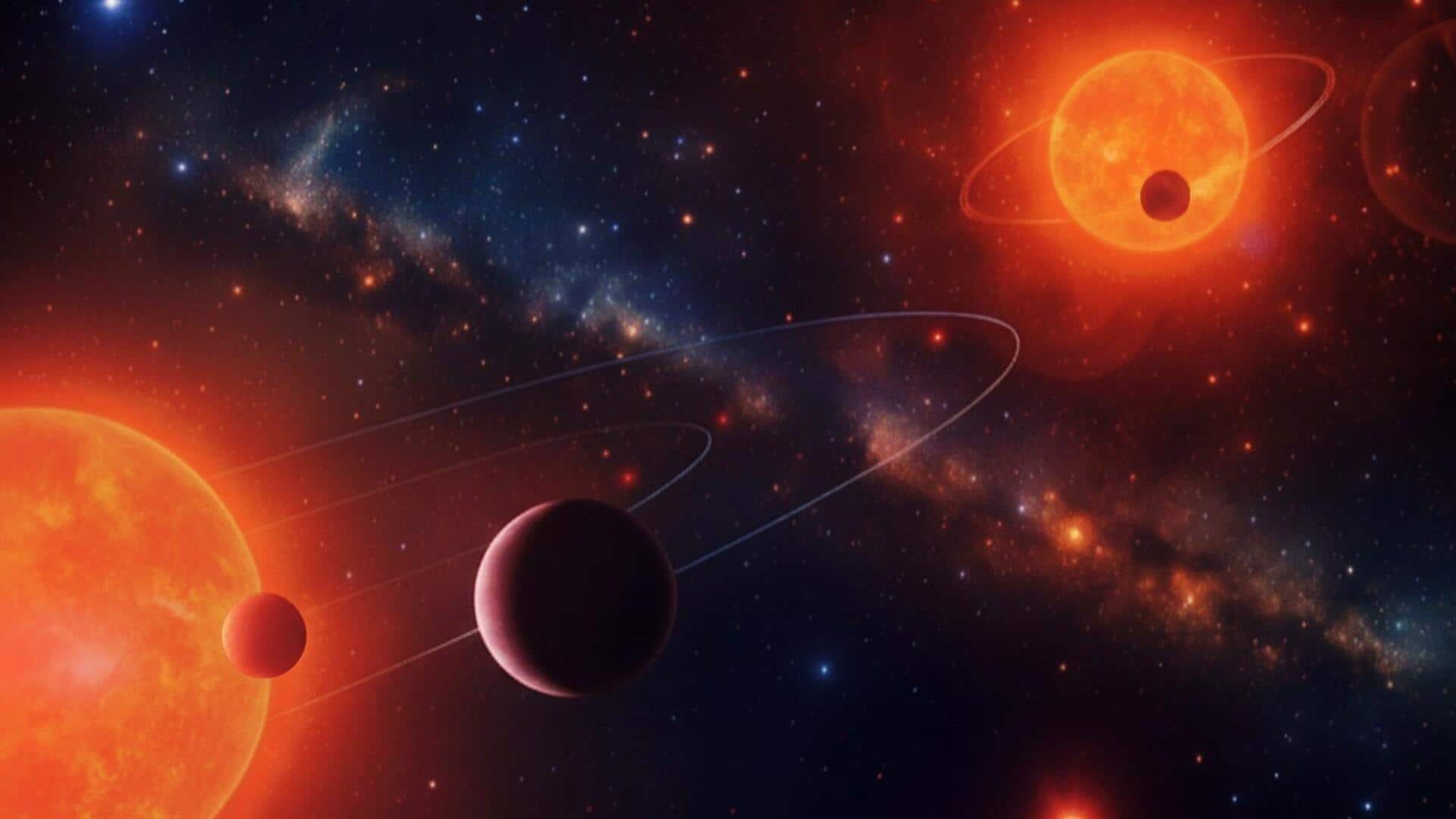
Watch: Three Earth-sized exoplanets found 190 light-years away
What's the story
An international team of scientists has discovered three Earth-sized exoplanets in the TOI-2267 binary star system, located some 190 light-years away. The finding, published in Astronomy & Astrophysics, challenges traditional theories of planet formation and stability in double-star systems. Sebastian Zuniga-Fernandez from the University of Liege (ULiege) said this unique arrangement makes TOI-2267 "the first binary system known to host transiting planets around both of its stars."
Unusual configuration
A look at the star system
TOI-2267 is a compact binary system, where two stars orbit each other closely. This creates an unstable environment for planet formation. However, the research team has discovered three Earth-sized planets in short orbits around these stars. Francisco J. Pozuelos from the Instituto de Astrofisica de Andalucia (IAA-CSIC) said this discovery makes TOI-2267 "the most compact and coldest pair of stars with planets known."
Tech advantage
Discovery of 2 planets was made by astronomers at ULiège
The initial detection of two planets was made by astronomers at ULiege and IAA-CSIC using their own detection software, SHERLOCK. This early discovery helped trigger ground-based follow-up observations. The confirmation of these planetary signals required an extensive campaign with several observatories, including SPECULOOS and TRAPPIST telescopes led by ULiege. These robotic facilities are designed to study small exoplanets around faint stars and were instrumental in confirming the planets' existence.
Research implications
Unique opportunity to test limits of planet formation models
Zuniga-Fernandez said the discovery of three Earth-sized planets in a compact binary system is "a unique opportunity" to test the limits of planet formation models in complex environments. Pozuelos added, "This system is a true natural laboratory for understanding how rocky planets can emerge and survive under extreme dynamical conditions." The finding raises questions about planet formation in binary systems and opens avenues for future observations with advanced telescopes like James Webb Space Telescope (JWST).